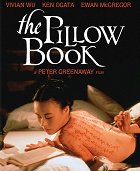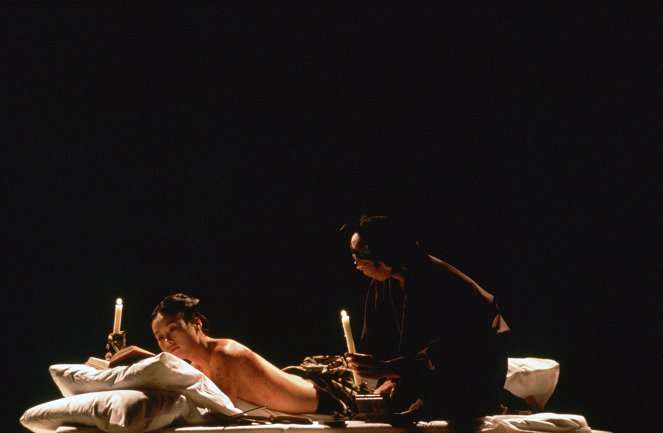Regie:
Peter GreenawayDrehbuch:
Peter GreenawayKamera:
Sacha ViernyBesetzung:
Vivian Wu, Ken Ogata, Ewan McGregor, Ken Mitsuishi, Chris Bearne, Mennan Yapo, Ronald Guttman, Adrian Kwan, Jim Adhi Limas, Ham-Chau Luong, Arnita Swanson (mehr)Inhalte(1)
Im Leben der jungen Japanerin Nagiko gibt es ein immer wiederkehrendes Ritual: An ihrem Geburtstag malt ihr Vater, ein Kalligraph, ihr Wünsche auf Gesicht und Nacken während ihre Tante aus dem “Kopfkissenbuch der Sei Shonagon”, einem Jahrtausende alten Tagebuch liest. Dieses Ritual endet an ihrem 18. Geburtstag. Doch Nagiko sucht seine Fortsetzung, weil das Bemalen ihres Körpers zur erotischen Obsession geworden ist. Ihre Liebhaber, kundige Kalligraphen, müssen ihren Körper bemalen – keiner befriedigt sie jedoch langfristig. Da lernt sie den Übersetzter Jerome kennen, der sie auf die Idee bringt, das Spiel umzudrehen und die Körper ihrer Liebhaber zu verzieren. Zwischen Jerome und Nagiko entwickelt sich eine Liebesgeschichte, die sich jedoch in Intrigen und Eifersucht verliert. Als Jerome stirbt, wird er von Nagikos größtem Feind, einem Verleger, gehäutet. Nagiko zelebriert daraufhin eine einzigartige Rache. (Verleiher-Text)
(mehr)Videos (1)
Kritiken (1)
"Peter Greenaway's fascinating film The Pillow Book opens with heroine Nagiko's birthday ritual. We see her father gently painting a birthday greeting on her face. These images indicate how influential Lacan's ideas about our initiation into language, the symbolic and the law of the father have become. Lacanian notions of subjectivity and textuality are further invoked when Nagiko sees her own written-upon reflection in a mirror..." (An Introduction to Critical Social Psychology, Alexa Hepburn, p. 87). One interpretation understands Greenaway's work as highly post-structuralist, The Pillow Book is completely so, both in form and content. Greenaway's cinematic exploration of language here goes so far as to grasp language as a sovereign sphere of desire and pleasure, inseparably intertwined with bodily pleasure, always captured in language. This sovereign power of language is materialized by the use of writing, in which not only the materiality of language and the reality of its effects are prominently manifested, but also through the use of Japanese characters (mysteriously beautiful and "delightful" to a European, the mystery of this signifier's essential inscrutability, through which we are compelled to seek fulfillment of our desire. /// Greenaway additionally dissolved this power of the sign into the entire film by using that unique overlay of shots and images, which connect image and writing through a continuous series of overlaps, just as the characters connect their bodies with the signs. /// Of course, the film is not perfectly Lacanian or Barthesian, but no reader of their works should miss reading this film.
()


